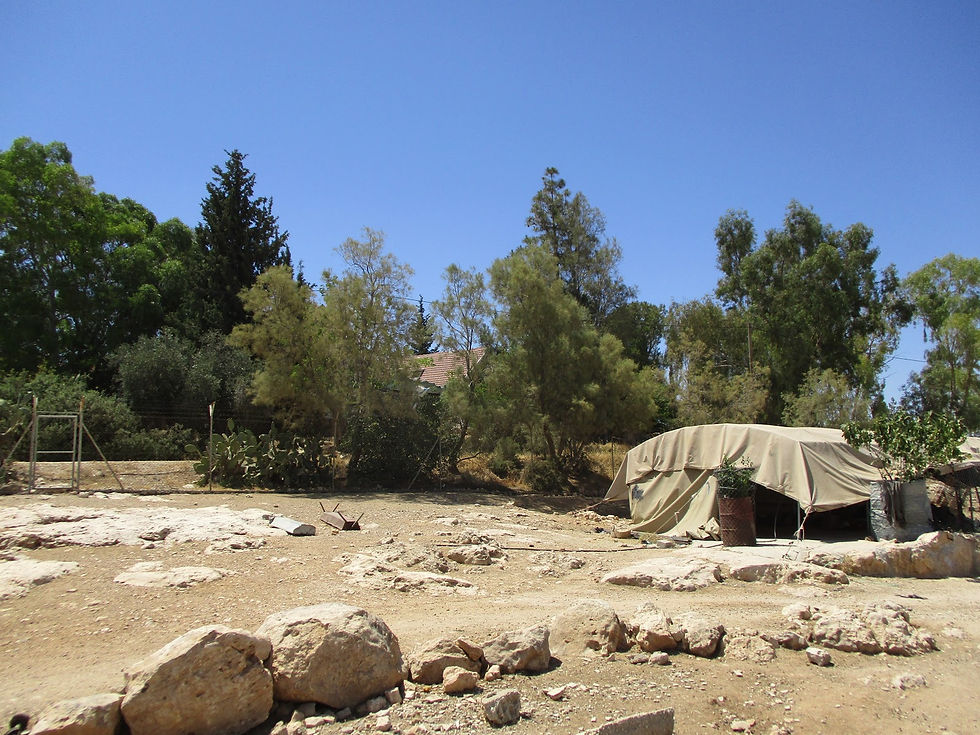Friends School in Ramallah—June 27th
- Mary L. Hanna
- Jun 28, 2018
- 4 min read
Wednesday morning John and I walked from the ISM House through the hustle and bustle of Ramallah to the Friends School, a K through 12 now coed institution founded by Quakers in 1869. As soon as we entered the gate, we discovered an oasis. The classroom and administration buildings center on a plaza with the most beautifully flowering plants we have seen so far on the West Bank. They invite the visitor into a space that is quiet and peaceful. As we were happily roaming around taking pictures of the plants, a slim, pretty 17 year old girl greeted us—in perfect English—and struck up a conversation. She had spent a year as an exchange student at Sidwell Friends School in Washington, D.C. and was eager to talk with Americans. We could see right away that Jasmine (pronounced “Yasmeena”) as she introduced herself, had a poise and self-confidence that we hadn’t seen among other Palestinian youth. She looked us right in the eye as she spoke and smiled easily.

We found out that Jasmine was at school during the summer recess because her International Baccalaureate curriculum (the IB diploma allows students to receive up to two years of credit at colleges and universities around the world) requires summer projects. Her friends from Sidwell (including Sasha Obama, the President’s daughter!) had encouraged her to consider American universities after she graduates, a path which she admitted she finds appealing. When we told her we were in the West Bank on a peace-keeping team, she said, “very cool” and proceeded to tell us that her Jewish friends at Sidwell “knew nothing” of the real situation of Palestinians until she described to them the harshness of life under the occupation. Her voice was tinged with sadness, as she reported this, but not resentment; it struck me that she was trying very hard to keep clear of the bitterness that so many Palestinians carry.

Jasmine is lucky; her father has a good job working for an insurance company and can afford the $3,500 yearly tuition for her and her two brothers. But the school provides scholarships to 15% of its students and seems to inculcate exactly the values which we would expect of a Quaker institution: openness, gentleness, simplicity, and concern for others. The high school students are certainly aware of the demonstrations that occurred in Gaza in the last couple of months. On stark white pieces of paper taped at regular intervals along the walls of the secondary school are the names of the “Gaza martyrs,” as they are called—the 59 individuals, including an 8 month old baby—who were killed by Israeli soldiers at the border fence. Many students are involved in the school-sponsored community outreach programs, especially the electronic Arabic reading platform, where children can listen to stories being read in Arabic and practice reading them aloud themselves.

“No, we’re not involved in the resistance here,” said Besan, the Communications Director for the Friends School and the next person we met, but then, as if to correct herself, she continued, “the occupation is part of everyday life.” Besan and Jumana, Assistant to the Head of School, looked about 10 years older than Jasmine (but were probably in their thirties) and were dressed just as simply—in blue jeans and white blouses. They had attended the school during the First and Second Intifada and credited it with making them feel “safe” during that tumultuous time. “It was a refuge,” Besan said, “life on the outside was frightening, but we would come in here and everything was the same as always.” The two women voiced the complaint that we have heard now, many times, on the West Bank, that they’re barred from seeing the sea and Jerusalem. Jumana said that her mother-in-law has family in Jerusalem whom she hasn’t seen in years; only now that she has turned 64 will the Israelis allow her to travel there. (“This is the only country where you want to grow old!” Besan interjected.)
“We don’t have hope,” Jumana said, when I asked them about the future. “The Palestinian Authority? We put up with them.” But both women are clearly happy with their work at the school; Besan plans to send her daughters there. “But if Hamas comes,” she said, we are moving to Australia!” Before we left, Besan gave us directions to the Ramallah Friends Meeting and where to find “the best ice cream in Palestine.” I was somewhat reluctant to leave; the oppressiveness of life under the occupation in Ramallah had lifted for me during the hour and a half that we were at the school. But it made me happy to think that one of my memories of this beleaguered city will be the faces of these three women—so welcoming, so cheerful, and so determined to live with grace in the face of constant oppression. As we walked back to the ISM House to join the other members of the peace team, I thought to myself, “there is more than one way to resist.”







Comments